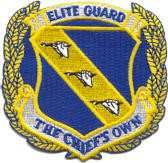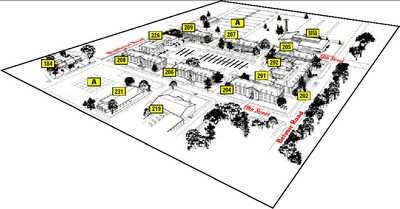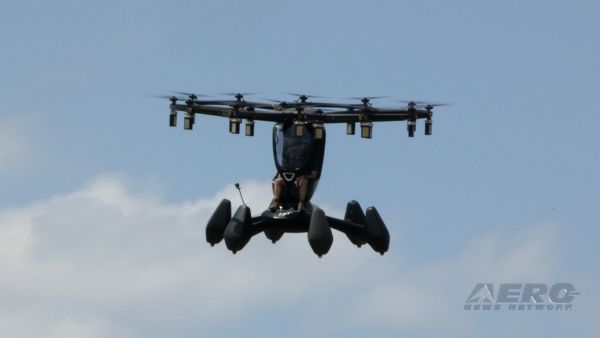Vulnerability Assessment Team Looks At Bolling
 Starting with the commander's
in-brief on Monday and continuing through next Friday, a crack team
of highly trained professionals will infiltrate Bolling, its tenant
commands and its Navy neighbors. Operating almost entirely
undetected, its mission is to seek out and identify areas that are
potentially susceptible to terrorist attack. Our mission is to be
alert: "JSIVA" is coming.
Starting with the commander's
in-brief on Monday and continuing through next Friday, a crack team
of highly trained professionals will infiltrate Bolling, its tenant
commands and its Navy neighbors. Operating almost entirely
undetected, its mission is to seek out and identify areas that are
potentially susceptible to terrorist attack. Our mission is to be
alert: "JSIVA" is coming.
JSIVA, the Joint Staff Integrated Vulnerability Assessment, is
an ongoing DOD-wide program that focuses on finding areas in which
an installation's security position could be improved or
strengthened. The Defense Threat Reduction Agency conducts JSIVAs
for the Deputy Directorate for Anti-terrorism and Homeland Defense,
and its multidisciplined, joint-forces teams consist of active
duty, Reserve and civilian personnel. The eight-person Bolling unit
will be led by a Navy captain and includes two Navy and Air Force
field-grade officers, an Army noncommissioned officer and four
GS-13s.

The last JSIVA was done in September 2000, but of course
everything has changed since then, said Gary Jones, 11th Wing
anti-terrorism/force protection program manager. The current
assessment process has "evolved" and been "refined" to reflect the
new, 21st century threat environment. "Who would have thought of
using an airplane as a flying bomb before 9-11?" he said.
Once the assessment is completed and potential vulnerabilities
identified, DTRA will send Col. Duane A. Jones, the 11th Wing
commander, a complete set of recommended actions designed to help
the wing detect, deter, counter, mitigate and recover from
potential terrorist attacks.
Jones emphasized JSIVAs are not "inspections," but "commanders'
tools" designed to inform them about areas that could be targeted
by enemies. And unlike inspections, which often involve intense
preparations and occasional anxiety, JSIVAs look at bases' normal,
day-to-day operations and have almost no effect on the person in
the street. Also, unlike inspections, wing leadership wants
vulnerabilities detected by the JSIVA identified, so they can be
fixed before terrorists exploit them.
"For most of the people on Bolling, it won't impact them at
all," Jones said. "Probably 99 percent of them won't even know that
there is a team on base or have any contact with them. The people
responsible for planning -- either disaster response, engineering,
security -- those will be more involved because they are the first
responders."
But Bolling will still be under a microscope, one that could
potentially focus, albeit briefly, on anyone here. "If they're [the
JSIVA team] sitting in the food court for lunch, they're listening
to see what kind of conversations take place," Jones explained.
"They will pay particular attention to those facilities that have
large populations because those are the most likely targets.
Densely populated areas are also likely places for
operations-security miscues that can aid a terrorist in gathering
information to plan an attack."

It's also quite possible that JSIVA members could stop a few
shoppers at the exchange and ask them questions that would reflect
their relative degree of security awareness.
"They could stop somebody and ask them what FPCON [force
protection condition] we're in," explained James Riner, 11th Wing
anti-terrorism/force protection officer.
A major area of emphasis for the JSIVA team will be to evaluate
the "synergistic" aspects of the wing's security environment -- or
how well Bolling's anti-terrorism officers and first responders
work with the Navy, Coast Guard and other organizations'
counterparts here.
"We have to have a good partnership with all those folks," said
Jones. "We meet with them in a variety of venues -- partnership
counsels, our threat working groups, our force-protection working
groups. It's not just Bolling, because we have to look out for the
community as a whole. It takes a synergistic approach, and the
commander is responsible for all these activities on Bolling."
Jones said the bottom line for us at Bolling is to be
aware of our surroundings and prepared to act quickly and
appropriately should the situation arise. "Are people aware of what
the threats are, what the force protection conditions are?" he
said. "Do they know how to report suspicious incidents? We want
people to be alert, not alarmed. There's no terrorist event that
ever takes place without a surveillance operation. So if you can
interdict that while it's still in the planning stage, you have
saved yourself a lot of grief and possible loss of life. If you see
something that looks out of place, you need to report it."
(Special thanks to Mike Campbell, 11th Wing USAF Public
Affairs)
 ANN's Daily Aero-Term (04.20.24): Light Gun
ANN's Daily Aero-Term (04.20.24): Light Gun Aero-News: Quote of the Day (04.20.24)
Aero-News: Quote of the Day (04.20.24) ANN's Daily Aero-Linx (04.21.24)
ANN's Daily Aero-Linx (04.21.24) Aero-News: Quote of the Day (04.21.24)
Aero-News: Quote of the Day (04.21.24) ANN's Daily Aero-Term (04.21.24): Aircraft Conflict
ANN's Daily Aero-Term (04.21.24): Aircraft Conflict





